“So have you seen a kangaroo?” It’s one of the first things that my fellow Americans ask me upon hearing that I live in Australia. Yes, I’ve seen a kangaroo. “What about a koala?” Yes, I have one in my backyard.
Now don’t get me wrong… kangaroos and koalas are downright awesome. I still smile each and every time I see one. But I think that the kangaroos and koalas overshadow their other marsupial brethren. Some of Australia’s coolest species — like gliders and pygmy possums, or tree kangaroos and marsupial moles — are ones that few people outside of Australia know about.
Here are 10 of my favorites Australian marsupials that you might not have heard of, and please share your other favorites in the comments.
-
Greater Gliders
Petauroides sp.
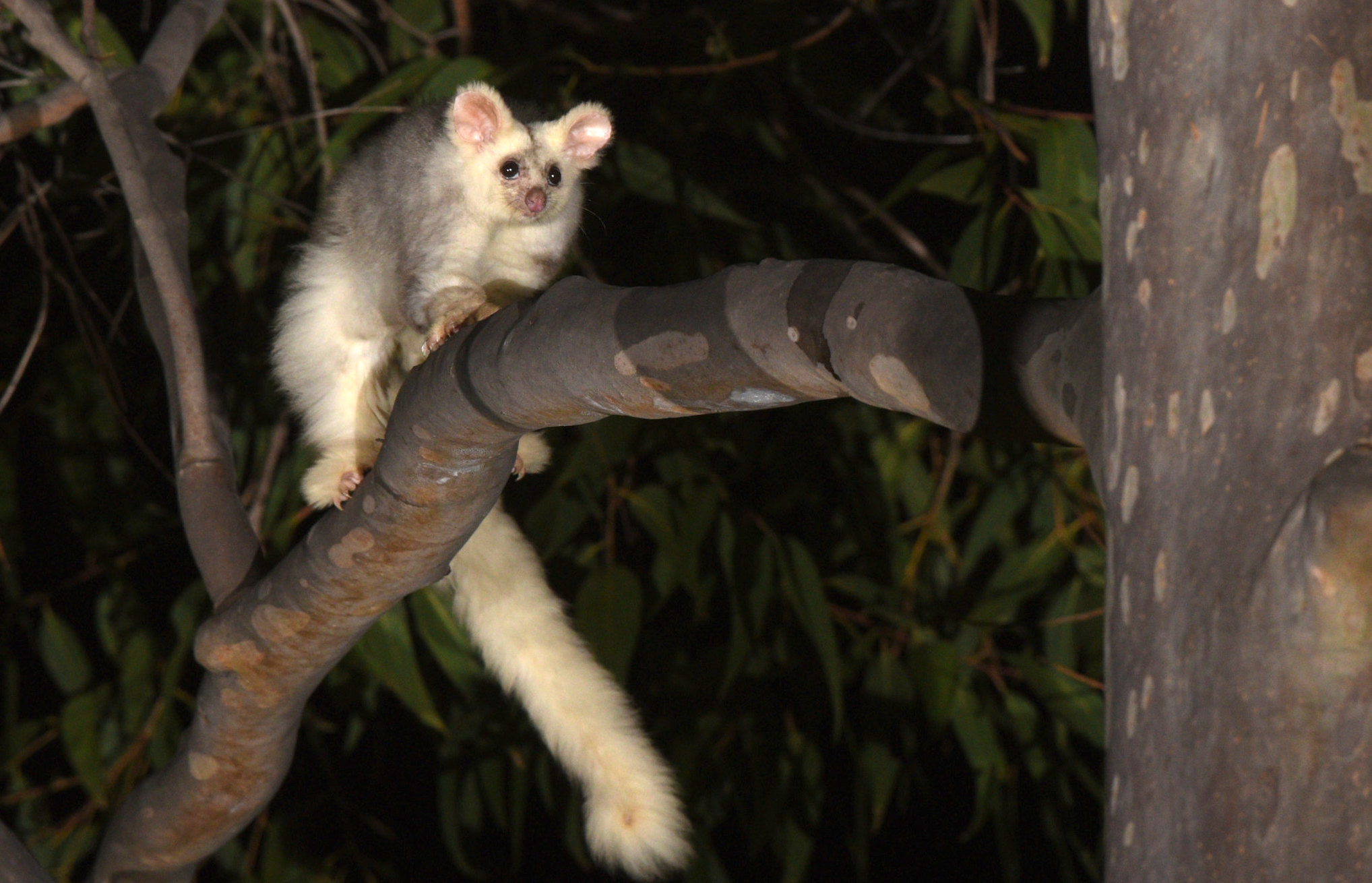
A greater glider clambers along a eucalyptus limb. © Dash Huang / Flickr The greater glider is one of those animals that looks like a cartoon come to life.
Once thought to be a single species, scientists now recognize three species of greater glider — northern, central, and southern — each with separate geographic ranges. (They can hybridize where their ranges overlap.) The species vary in color, from white, to dark brown, to shades of grey.
The greater gliders use a membrane between their legs to “glide” from one tree to the next. Unlike other gliding mammals, which soar by splaying all four limbs in an X shape, greater gliders form a triangle shape with their hind-legs outstretched and their front legs tucked up under their chin. The tail helps steer the descent as they glide up to 100 meters at a time.
Greater gliders are nocturnal, traveling from tree to tree in the dark in search of their preferred food, eucalyptus leaves. By day they hide out in tree hollows, with some individuals maintaining as many as 20 dens. Their long, prehensile tail helps them balance, and they can grip tree branches with their sharp claws and opposable thumbs.
Greater gliders are considered a vulnerable species nationally and endangered in Queensland. Their population had declined by about 80 percent in just 20 years, largely due to habitat loss and fragmentation caused by the clearing of old-growth forests and bushfires exacerbated by climate change.
-
Green Ringtail Possum
Pseudochirops archeri
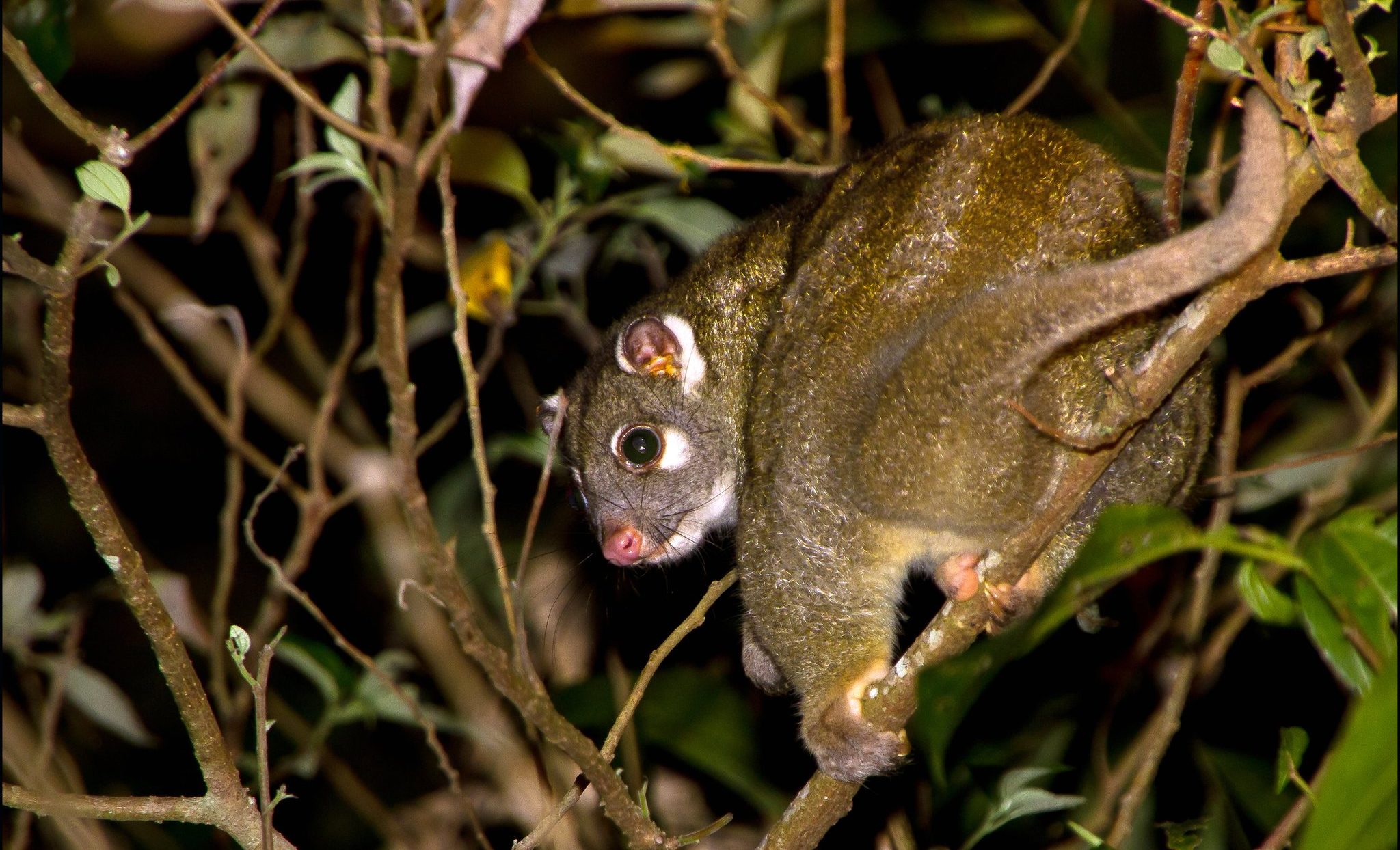
A green ringtail possum in the Atherton Tablelands. © Joe McKenna / Flickr This chonky little possum just might be my favorite Australian marsupial.
Australia is home to several species of ringtail possum, all of which have prehensile tails that they use to cling to tree branches. But green ringtails are special. And they really are green. Their thick coat is made up of black, white and yellow hairs, which when combined creates a mottled green color that helps them blend into the forest canopy and avoid predators.
Unlike other possum species, green ringtails don’t roost in tree hollows or build dreys. Instead, they spend the daylight hours curled up in a tight little ball high in the canopy. A green ringtail will grip the tree branch tightly with its hind paws, and then curl forwards so its face and forepaws are tucked down into its stomach, and then wrap its tail over its face. The result is a bug-eyed, round ball of fluff that’s adorable and very difficult to spot.
Green ringtails are found in a tiny area of rainforest in north-eastern Queensland, around the Atherton Tablelands. Their limited range makes them vulnerable to threats like land clearing and climate change.
-
Tree Kangaroos
Dendrolagus lumholtzi & Dendrolagus bennettianus
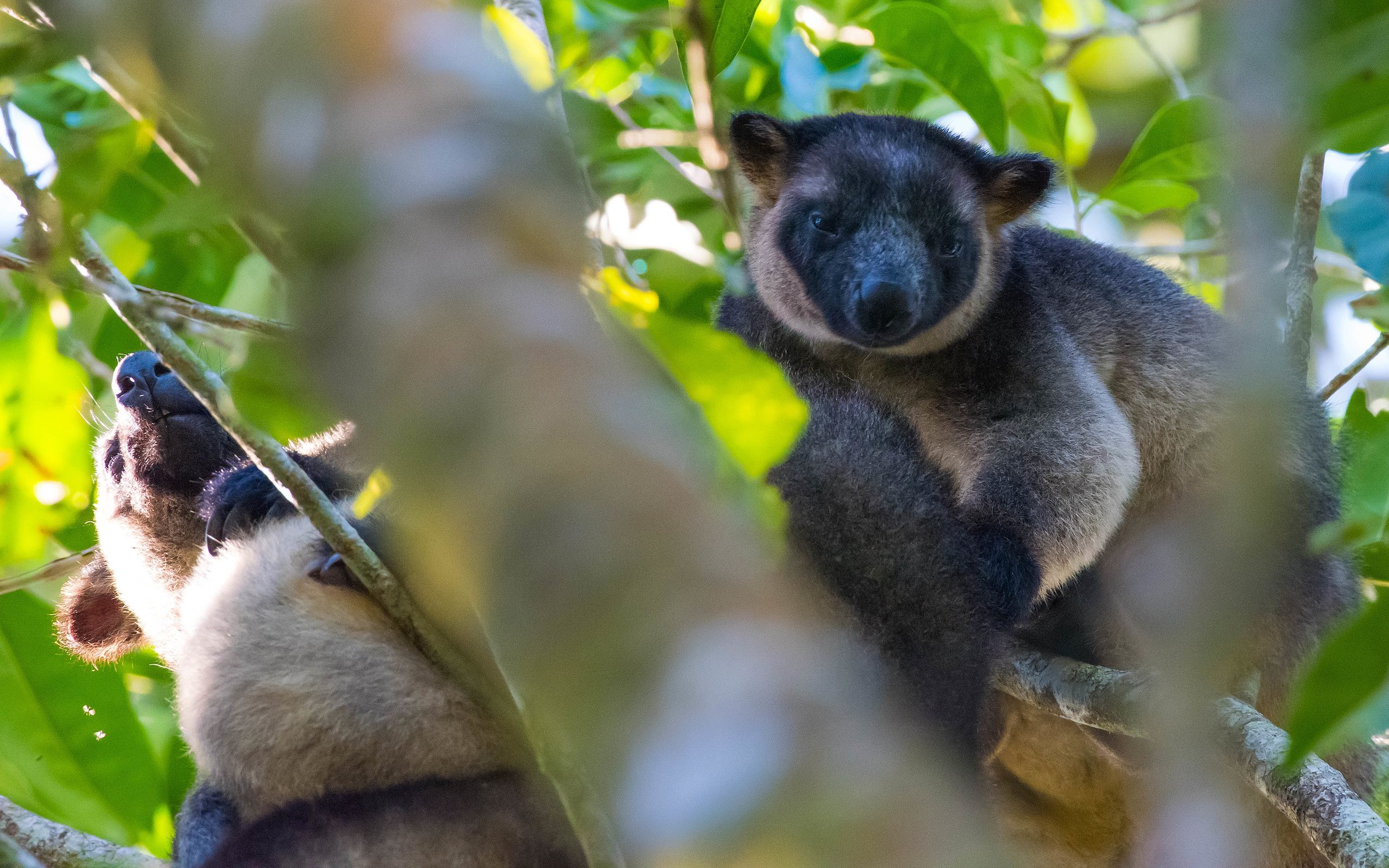
A Lumholtz’s tree-kangaroo with its joey. © Michael Eisen / Wikimedia Commons Yes, I said tree kangaroo.
Australia has two species of arboreal kangaroo: Lumholtz’s tree-kangaroo and Bennett’s tree-kangaroo. They’re both found in small, isolated patches of tropical forest in north-eastern Queensland. As many as 12 additional species are found in New Guinea — scientists are still unraveling exactly which are species vs subspecies — most of which are threatened or endangered.
Kangaroos are famous for their bouncing gait, which is a decidedly terrestrial form of locomotion. So why did the kangaroo climb the tree? Based on the fossil evidence, evolutionary biologists think that all marsupials in Australia and New Guinea — including kangaroos — evolved from a tree-dwelling, possum-like ancestor. That species ventured onto the ground and evolved into the myriad array of terrestrial marsupials we see today. At some point around 8 million years ago, one of those ground-dwelling kangaroos gradually returned to the treetops.
Lumholtz’s is the (relatively) more common species, found in remnant forests of the Atherton Tablelands. The species is named after the Norwegian explorer who was the first European to record a specimen in 1883, however, the local indigenous name for the species was likely “mabi” or “mapi.”
I have vivid memories of spotlighting for tree kangaroos. The vegetation was so dense that I couldn’t see beyond a few meters in any direction. After several muddy hours of tramping, I heard something crashing through the foliage above. I don’t know what it was, but it was not small. The next morning, I went back into the forest in a last-ditch effort to see my first tree kangaroo. Just a few short minutes later I found one, high in the canopy, scratching itself and enjoying the morning sun. It remains one of the best mammal-watching experiences of my life.
-
Marsupial Moles
Notoryctes typhlops & Notoryctes caurinus
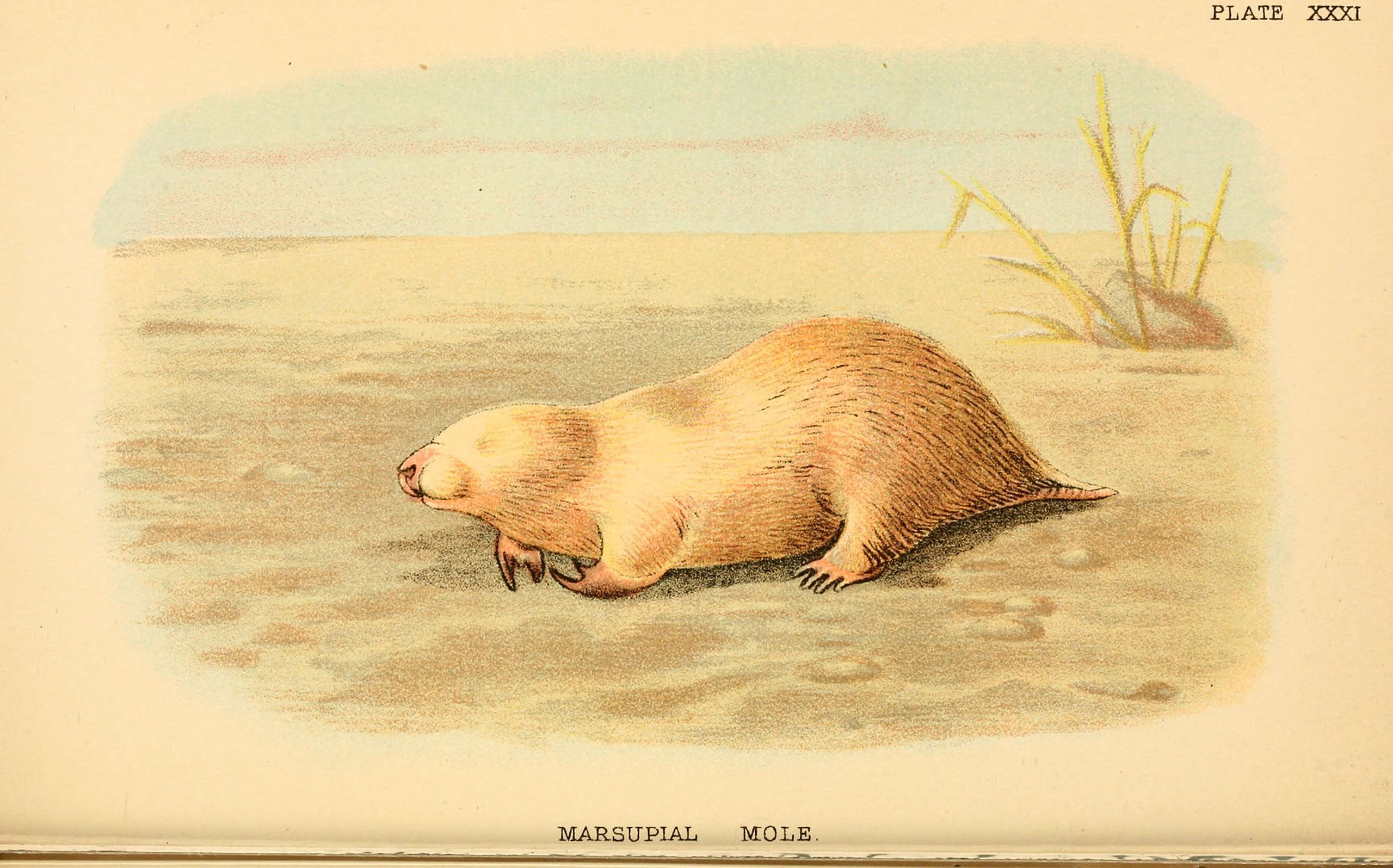
An illustration of a marsupial mole.© Richard Lydekker / Wikimedia Commons This bizarre marsupial is so rare that only a handful of Western scientists have ever seen it alive.
Scientists believe that there are two species of marsupial mole: The southern marsupial mole, also known as the itjaritjari by local indigenous peoples, and the northern marsupial mole, also known as the kakarratul.
While they might have “mole” in their name, these little mammals are not related to the moles of North America and Eurasia. They’re an example of convergent evolution, whereby two unrelated species evolve similar attributes.
Marsupial moles are 6 inches long, or about the size of a large chipmunk. Their fur is golden yellow on top and a rich orange on their undersides. They’re found in the remote, central deserts of Australia where they spend most of their time underground (hence the paucity of sightings). They have massive front claws to burrow through desert soils.
They’re also are functionally blind; they lack a pupil and their eyes are just vestigial lenses under the skin. The marsupial mole also has a backward-facing pouch so that it stays free of dirt as the animal burrows. (Other burrowing marsupials, like the bilby and wombat, share this trait.)
-
Greater Bilby
Macrotis lagotis
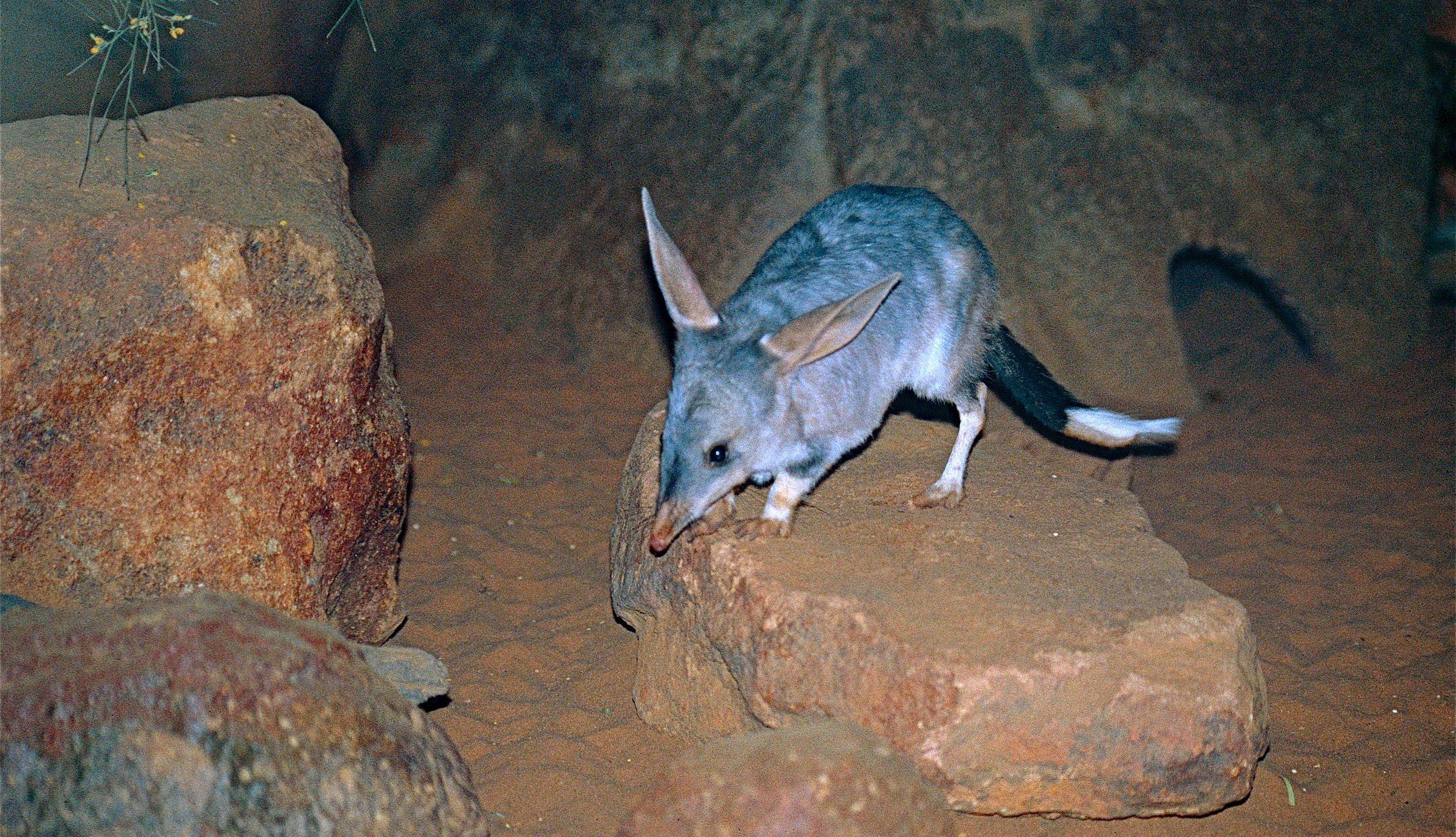
A captive greater bilby. © Bernard DUPONT / Wikimedia Commons The Easter Bunny doesn’t come to Australia. Instead, each April schoolchildren eagerly await the arrival of the Easter Bilby.
At first glance, the bilby does resemble a bunny. It’s small, with a silky grey coat, button nose, and large floppy ears. And it hops. But greater bilbies are desert marsupials, found in remote outback regions of western and central Australia. Like bunnies, bilbies are excellent burrowers, creating extensive series of tunnels in the desert sand, which they use as shelter and protection from predators.
Their range used to cover as much as 70% of the continent, but invasive predators, including cats and foxes, have greatly reduced their range and numbers. (Predation drove a similar species, the lesser bilby, extinct by the 1950s.) Changes to fire regimes have also altered their habitat.
Scientists estimate that less than 10,000 bilbies remain in the wild. Conservationists are breeding bilbies in captivity, as well as protecting semi-wild populations that live inside fenced, predator-free enclosures inside national parks. Recently, conservationists translocated more than 30 bilbies from a park in Queensland to one in the Northern Territory, where they’ll kick-start a second captive breeding program.
-
Brush-tailed Phascogale
Phascogale tapoatafa
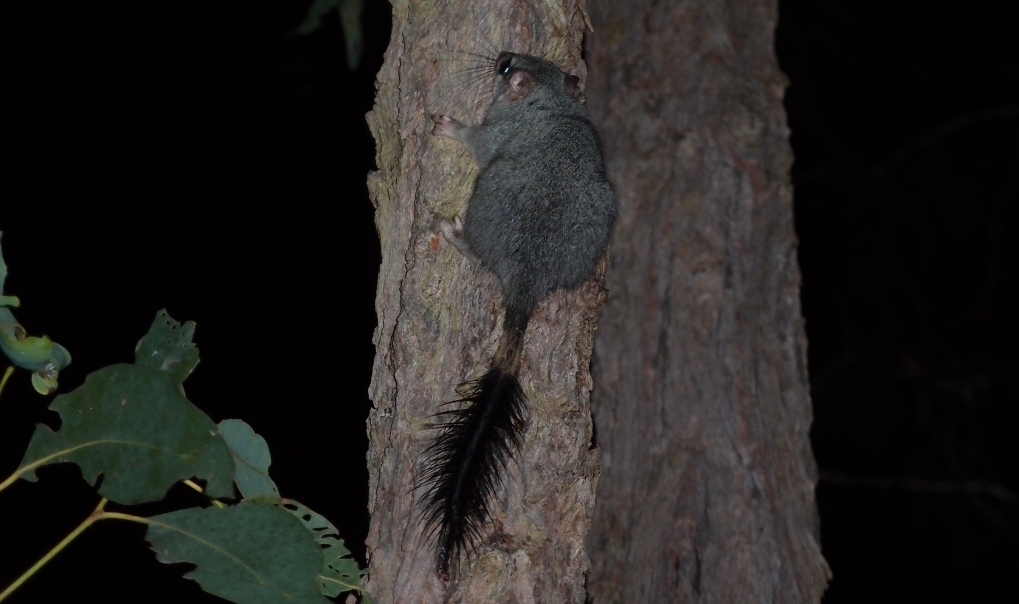
A brush-tailed phascogale. © eye weed / Flickr Take a rat, enlarge its ears, and then replace its tail with a bottle cleaner. Now you have a brush-tailed phascogale.
These fluff-tailed marsupials are found in forests along Australia’s east coast and parts of Western Australia. During the day they nest in tree hollows, and at night they forage for small carnivorous fodder: spiders, insects, lizards, and even small mammals and birds. They’re even known to attack chickens. They can jump up to 6.5 feet to traverse from tree to tree, and rarely descend to the ground.
Habitat loss, competition with non-native bees for nest hollows, and predation by cats and foxes are causing brush-tailed phascogale populations to decline. Scientists estimate that their range has decreased by 50% in the last 30 years.
-
Spot-tailed Quoll
Dasyurus maculatus
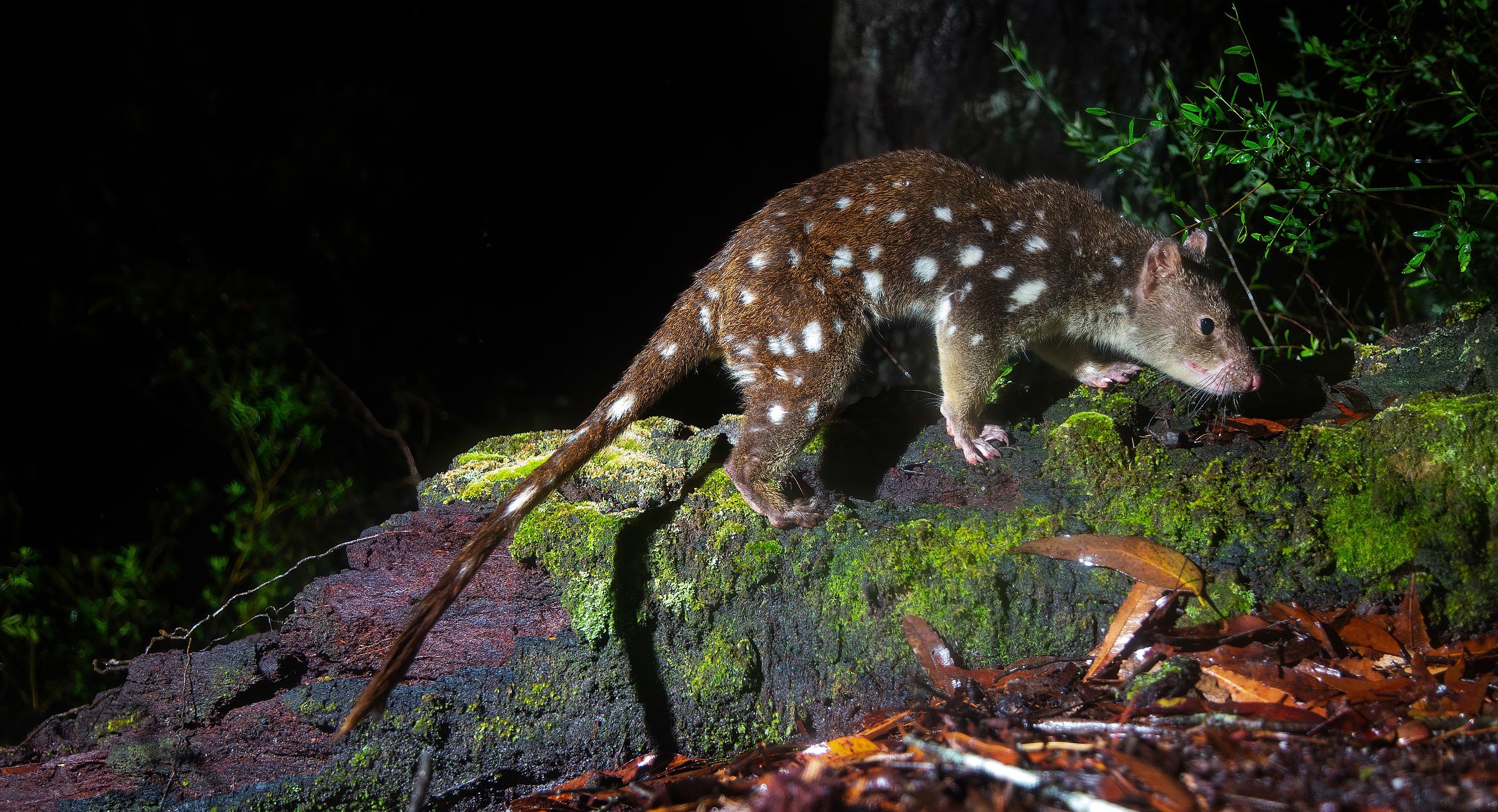
A spot-tailed quoll photographed in Barren Grounds Nature Reserve. © JJ Harrison / Wikimedia Commons These seldom-seen mammals are as fierce as they are cute. Also known as the tiger quoll, spot-tailed quolls are found in forests and woodlands along the southeast coast of Australia and across Tasmania. They have a rusty orange coat, speckled with white spots, and a pink button nose.
Spot-tailed quolls are the second-largest mammalian predator in Australia, after the dingo. (The thylacine, which humans hunted to extinction in the early 1900s, was also larger.) They have a flexible diet and will eat insects, crawfish, reptiles, birds, and small and medium-sized mammals. They’re also happy to scavenge carcasses of kangaroo, feral pigs, sheep, and cattle.
Spot-tailed quolls are the largest of Australia’s quoll species, roughly the size of a small domestic cat, but with a bulkier body. That might sound small, but don’t underestimate this fierce little predator. They have the second strongest bite force-to-body size ratio of any predatory mammal — beaten only by the Tasmanian devil — and can take down prey much larger than themselves.
-
Numbat
Myrmecobius fasciatus
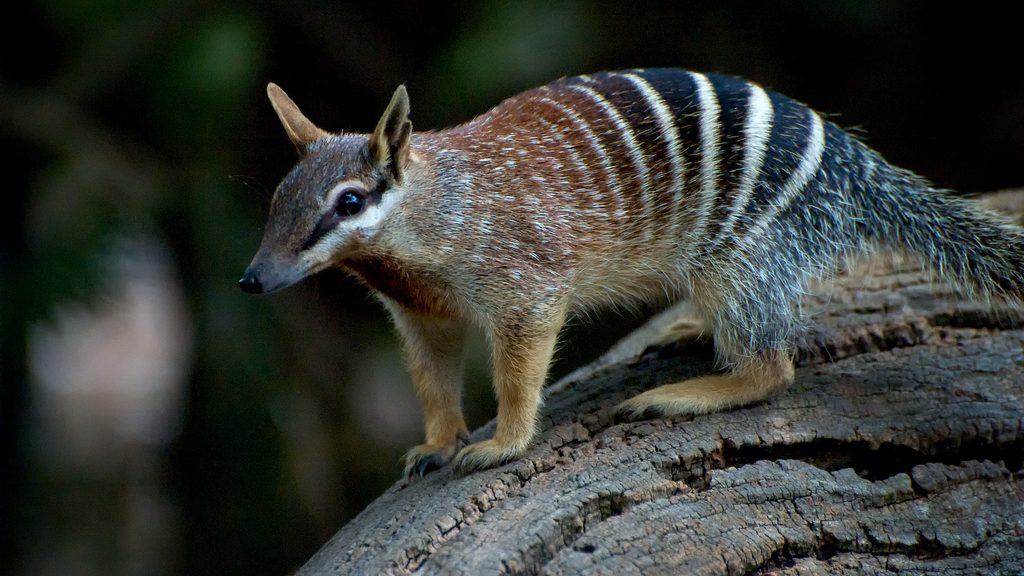
A numbat. © Helenabella / Wikimedia Commons This fantastic little marsupial is also one of Australia’s rarest.
Numbats are about the size of a large squirrel, with a pointed nose, striped rump, and bushy tail. They have a highly specialized diet: they eat only termites, and lots of them. They forage during the day, using their acute sense of smell to locate termites just below the surface. Then they dig the insects out with their front paws and lick them up with their long, sticky tongue. A single numbat can eat 20,000 termites each day.
Numbats are endangered, with less than 1,000 individuals still remaining. While their historic range extended across much of arid and semi-arid southern Australia, today they’re found in just two protected areas in Western Australia. (Conservationists have also established a handful of small, reintroduced populations within fenced, predator-proof enclosures.)
Their main threat is predation by feral cats and foxes, as well as habitat loss and fragmentation. Like the bilby, numbats are the focus of breeding programs, which protect the animals behind predator-proof fences.
Numbats are the only living member of their genus and are not closely related to other living marsupials. Fossil evidence suggests that they diverged from other marsupials between 32 and 42 million years ago.
-
Antechinus
Antechinus sp.
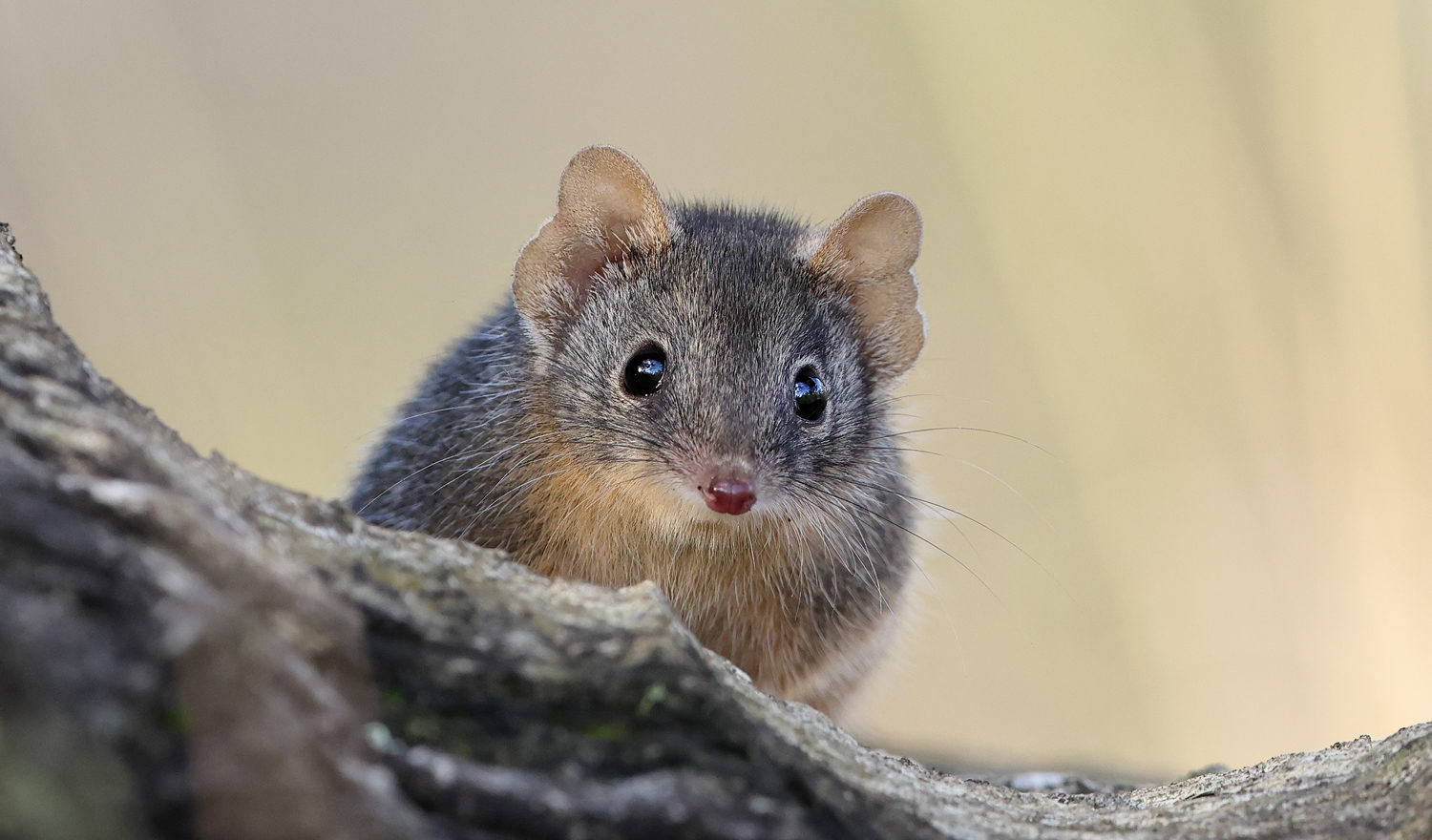
A yellow-footed antechinus. © patrickkavanagh / Flickr Antechinus are small, mouse-like marsupials with distinctive double-lobed ears. All 15 species of Australian antechinus have an, ahem, interesting reproductive strategy.
Each year, during the breeding season, male antechinus enter a suicidal sex frenzy. They seek out and mate with as many females as possible, without stopping to eat, drink, or sleep. After a three-week mating marathon, the females are pregnant and ready to raise the next generation. The males, meanwhile, all die of exhaustion.
The lack of sleep and food, as well as an overproduction of hormones — including testosterone and the stress hormone cortisol — all contribute to the males’ rapid decline. They go downhill fast: their immune system stops working, their fur falls out, they develop open sores on their body, and they go blind. But they keep trying to mate right up until the end.
The resulting population crash leaves more food (insects) available for the females and, eventually, their young. And the newborn males have one year before they, too, go out with a bang.
-
Pygmy Possum
Burramyidae family
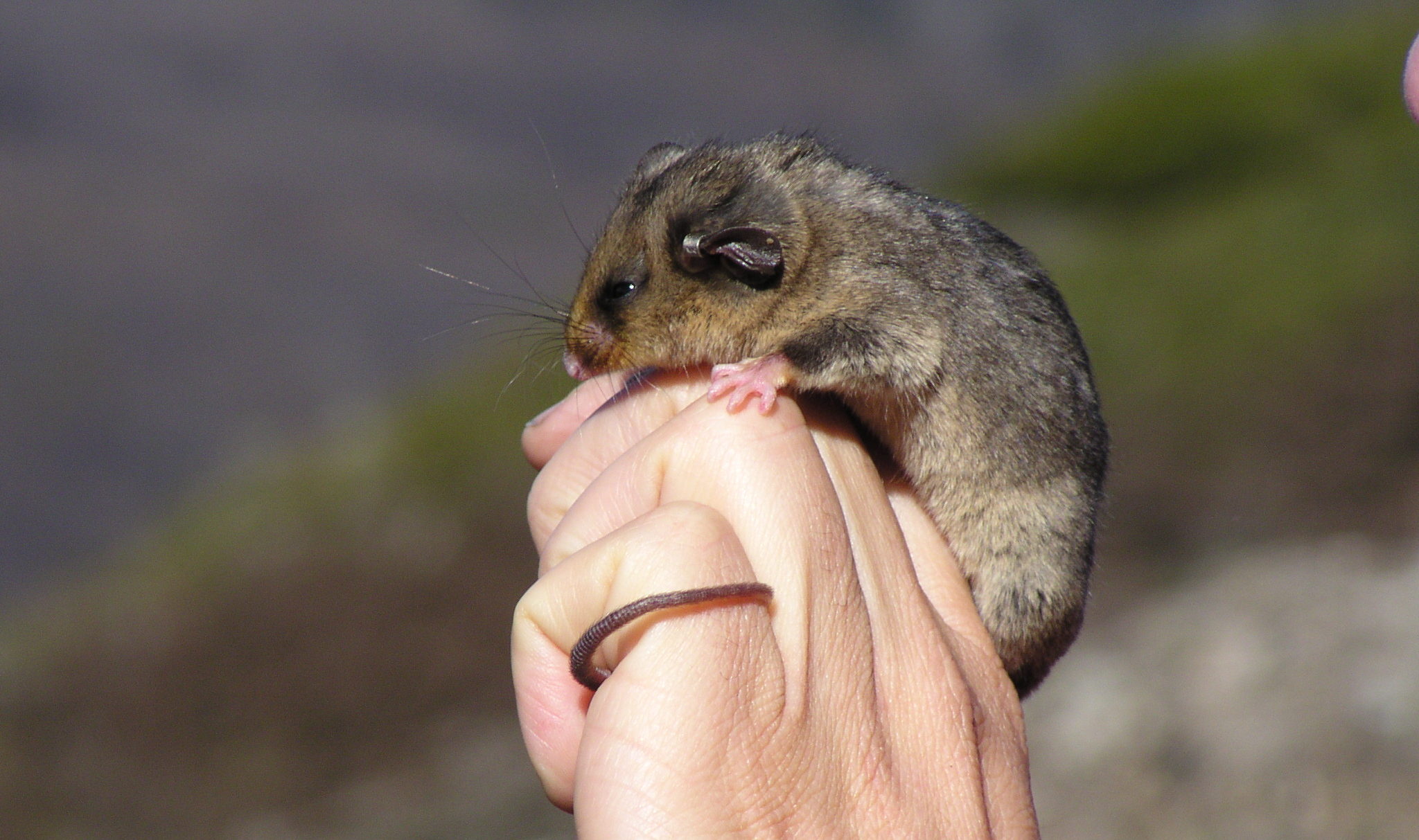
A researcher holding a mountain pygmy possum. © Australian Alps & Parks Australia / Flickr Honey, I shrunk the possum.
Australia has 5 species of pint-sized possums, called pygmy possums. Four of those are endemic to Australia, while another also occurs in New Guinea. Like their larger possum relatives, pygmy possums have prehensile tails that help them climb through the foliage as they forage for insects, fruit, seeds, pollen, and nectar.
The mountain pygmy possum (Burramys parvus) weighs 1.6 ounces and lives amid the rocks on high alpine mountains in Victoria and New South Wales. During spring and summer they feed exclusively on bogong moths, which migrate to high alpine meadows to breed. Mountain pygmy possums are considered critically endangered by the IUCN. Scientists estimate that there are fewer than 2000 individuals left. Threats include feral cats and foxes, climate change, habitat loss, and a decline in bogong moth populations.
Another pygmy possum standout: The Tasmanian pygmy possum (Cercartetus lepidus), which is the smallest marsupial species in the world. Adults measure just 3 inches long (not including their tail) and weigh less than half an ounce.
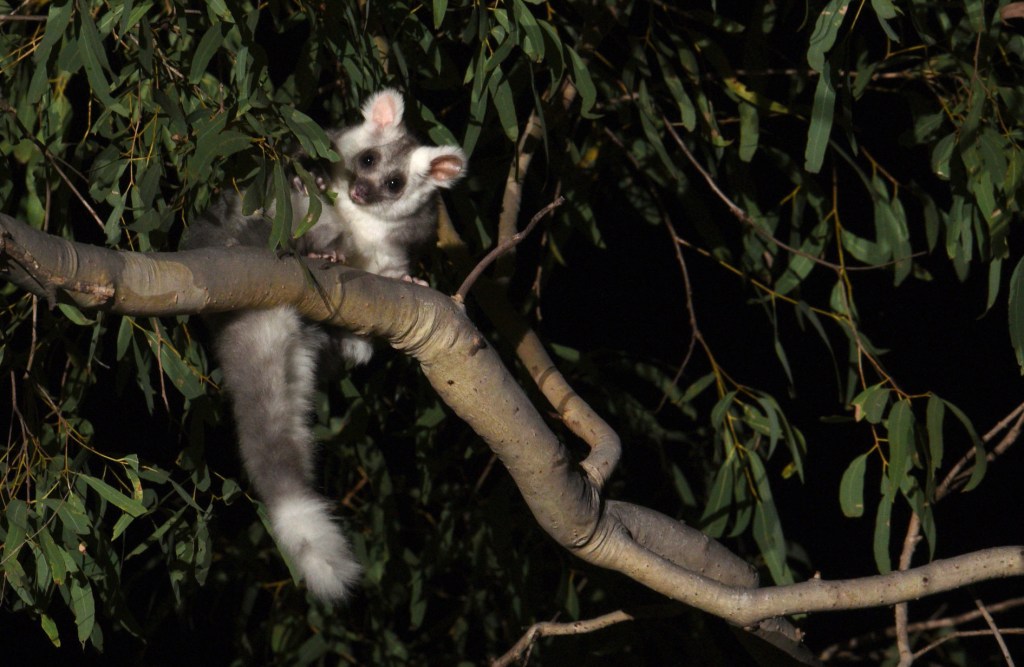



I love these animals, but I’d like more please.
They are so gorgeous! We have something in our garden that kind of bounds through the leaves like a frog but isn’t. It’s little bit long as it stretches out like the MarsupiaM mole but we live in Southern Queensland where they are not found. I would say it’s probably about 20 cm long. We can’t see a tail, but it might have one. It is a little hard to see at night. What do you think this little animal could be?
Hello there.
We’re trying to find information on animals which are:
• Located in Western Australian (North Perth – Yanchep)
• Able to climb a flat surface (we have photos of the imprints left on our wooden gate)
• Fore foot: 4 toed, and 3.5cm long
• Hind foot: 4 or 5 toed, and 4 – 4.5cm long
Are you able to help please?
Thank you
Miss Justine, That was such an Awesome and Very Interesting Article! I really actually enjoyed reading it and enjoyed being able to learn about Those Amazing Marsupials! I didn’t even know that they existed at all, I’m glad that I have learned something new about this Interesting World of Ours! Thanks A Bunches and I Hope To Read More From You!!
Fantastic article! These are truly interesting and amazing mammals!
Thanks for the great writing – really love Cool Green Science!
Thanks, Justine, for a wonderful tour of amazing, little-known (here) animals! Oddly, the one whose name I already knew was the numbat. The phascogale (who makes these names up?) looks remarkably like a packrat except for the totally weird tail. I do feel sorry for the poor antechinus males; what a way to run a species…
Thanks, Justine. What a fun read. If I’m lucky, I’ll live long and prosper by seeing a few of these wonderful marsupials. Our common opossum in the U.S. is a wonderful beast and so well adapted to a land of domestic and feral cats and dogs. Of course it has lived with such predators and many wild predators for a very long time and so has an advantage. Hopefully, the many breeding programs and predator management programs will provide a safe-haven for the 10 marsupials you showed. Thanks.
Thank you for this great information. I thoroughly enjoyed and learned so much about these wonderful Marsupials that I never would have thought existed.